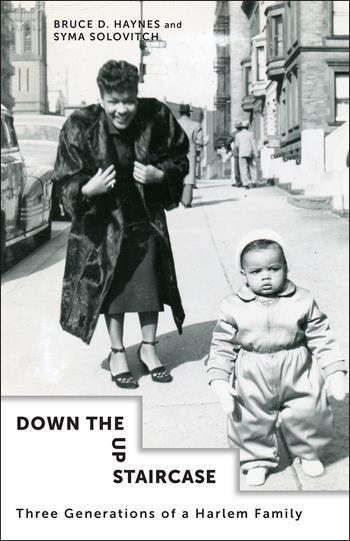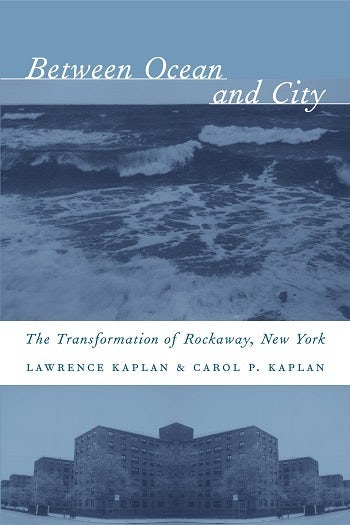By the time King was shot, everyone in Harlem was black

This week, our featured book is Down the Up Staircase: Three Generations of a Harlem Family, by Bruce D. Haynes and Syma Solovitc. Today we are happy to present an excerpt from the book’s first chapter. Remember to enter our book giveaway by Friday at 1 PM for a chance to win a free copy!
In Black Manhattan (1930), James Weldon Johnson wrote that Harlem had all the elements of a “cosmopolitan center.” Some thirty-five years later, this was still true. Most folks on our block
had stable incomes, bourgeois aspirations, advanced degrees, and professional occupations. Doctors and lawyers, many from the Caribbean, lived down the street and were a part of our lives. Dr. Dobson—my baby doctor—lived two doors down. When I was six, he employed me to empty the half dozen ashtrays that dotted his small office. Dobson was an icon on the block and a noted Harlem bachelor in the society pages of Jet magazine (although it was rumored that the doctor kept regular company with Miss Virgie Lumpkin, the attractive nursery school director). The Rawlings lived in the corner house. They were a family of lawyers who had handled our family business for decades. Dr. Morgan and his family lived around the corner, on 145th Street toward Saint Nicholas Avenue; other doctors had home offices up on 148th toward Amsterdam Avenue. In fact, growing up, I was surrounded by doctors and lawyers.Our housekeeper, Mrs. Grandberry, doubled as my nanny until I was eight. Every morning we worked out with Jack LaLanne, doing jumping jacks and knee lifts and stretching with our giant rubber bands while he chided us for letting our bustlines go. Saturday mornings meant Winky Dink and You , hosted by Jack Barry. Winky Dink required a special kit—a clear plastic overlap (called a “magic TV window”) that fit over the television, along with erasable crayons to draw in a rope or ladder or bridge to rescue Winky from the next jam. It was the world’s first touchscreen video.
Television had yet to outgrow its demeaning stereotypes of black people. Jack Benny’s butler, Rochester, was still shuffling, and Buckwheat was TV’s favorite pickaninny. Bill Cosby, who had been regularly appearing in I Spy since 1960, was the one authentic black person that white people regularly allowed into their living rooms. Others, like Louis, Ella, or the Duke, were honored guests on The Ed Sullivan Show, and we were all rallied to the set whenever they appeared. This was a period when black identity was in flux. Older folk, like my parents, still referred to themselves as Negroes, while my brothers were black, proud, and beautiful. By the time King was shot, everyone in Harlem was black.







